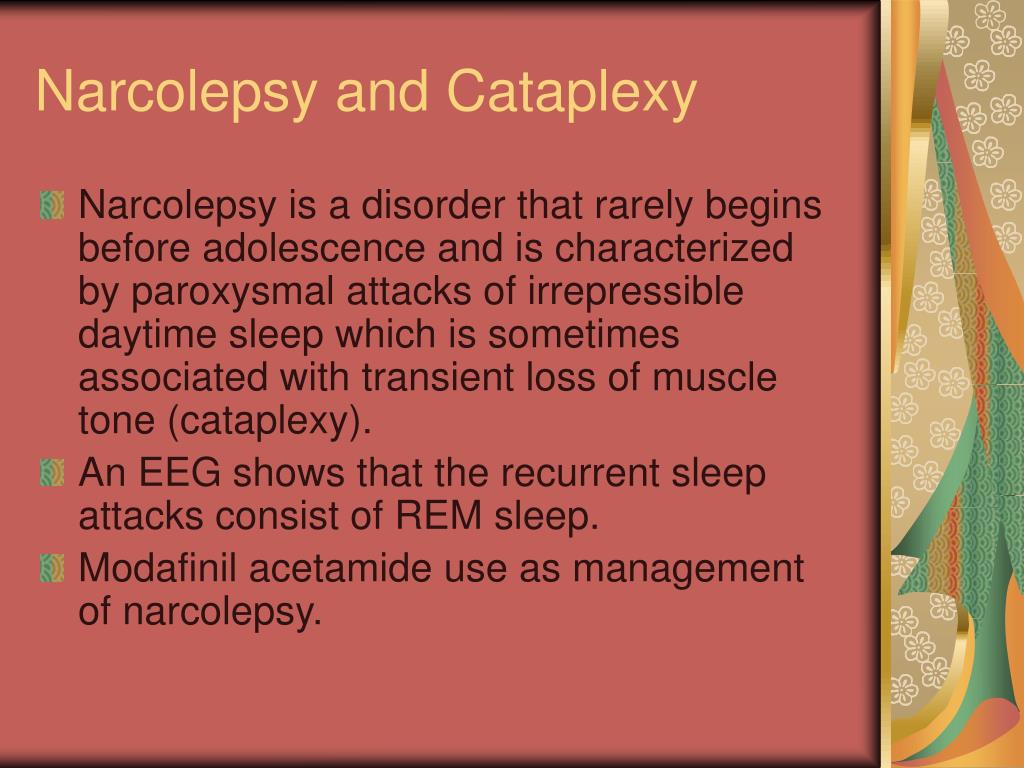

Researchers are exploring genetic factors, infection, trauma, and autoimmunity as possible underlying causes. Hypocretin, also known as orexin, is a naturally occurring brain chemical that’s important for wakefulness, REM sleep regulation, feeding, and other functions. Narcolepsy type 1 is thought to be triggered by a loss of hypocretin in the brain. Narcolepsy with cataplexy is called narcolepsy type 1, while narcolepsy without cataplexy is called narcolepsy type 2. People who suffer from narcolepsy tend to experience excessive daytime.

vivid dreams or hallucinations upon falling asleep (hypnogogic hallucinations).Sleepiness is often present during the day, but at times, the urgency to sleep is overwhelming (sleep attacks). Cataplexy causes loss of consciousness during any expression of heightened emotion, including laughter. The measure for EDS was a provisional version of the ESS-CHAD, similar to the ESS but with minor changes to be more easily understood by children.

Narcolepsy is a chronic neurological condition characterized by excessive sleepiness. The measure for cataplexy was a daily diary, previously used in adult clinical trials, which captured the presence and frequency of cataplexy attacks.3033.


 0 kommentar(er)
0 kommentar(er)
